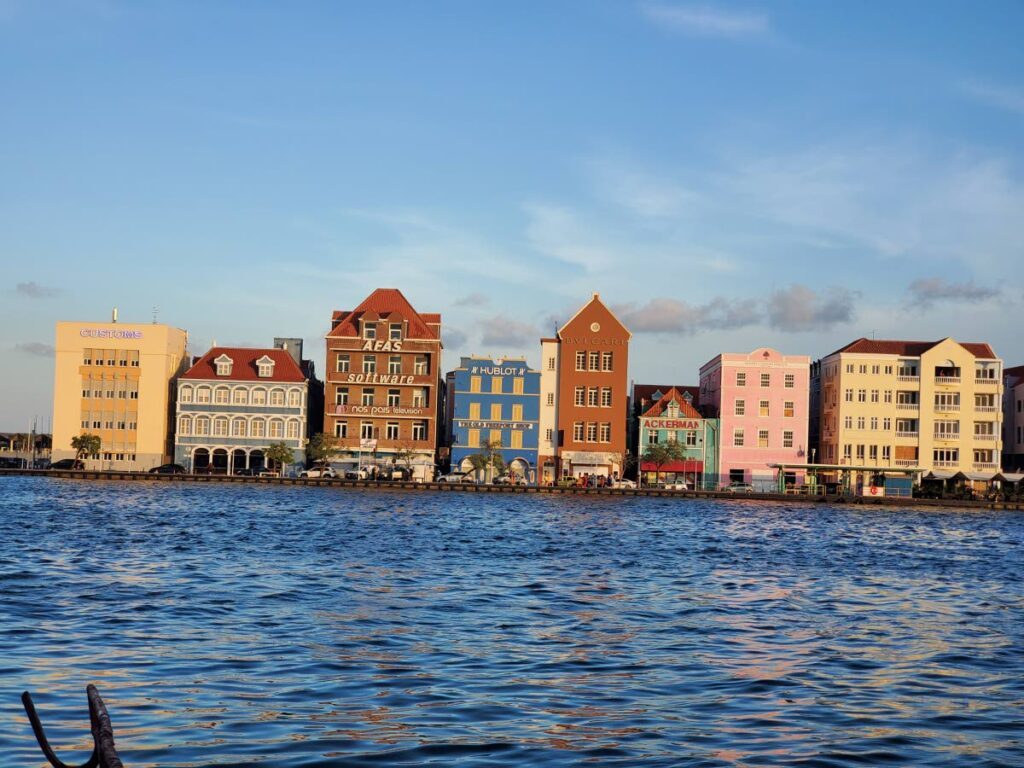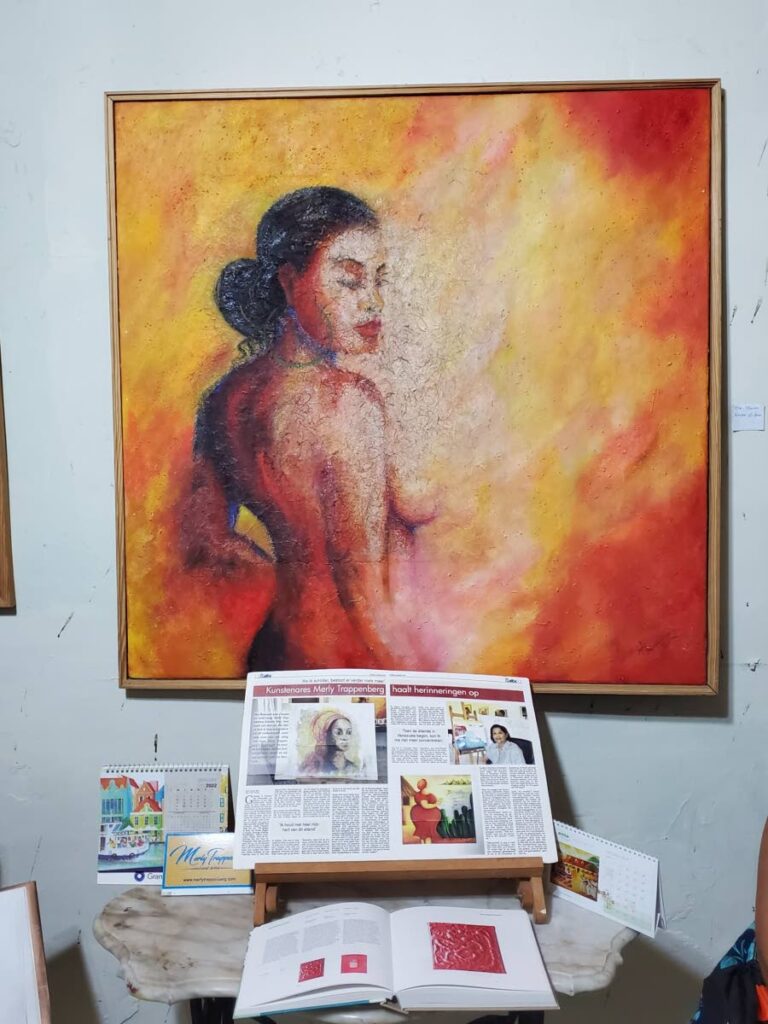What to do in Curacao?

VISHANNA PHAGOO
Despite having a population of only around 190,000, Curacao is rich in culture and is most popular for its clear blue beaches, but what people are not aware of is its rich night life, musically-inclined people and surprising history.
Caribbean Airlines, in collaboration with the Curacao Tourist Board (CTB), hosted journalists and media influencers from September 1-5 to experience these and its fifth Kaya Kaya Festival, held annually on September 2.
Kaya Kaya Festival
Kaya, which means street in Papiamento – one of the languages of Curacao – was created by Kurt Schoop and Clayton Lasten as a way of developing an area from one deemed dangerous for visitors into one of the many popular tourist spots.
Schoop spoke to the media at the festival , explaining its origins and how it helped the community he has been living in for over 20 years.
"First, it started as a street party, which I organised with friends and by telling the neighbours as well. It became bigger and bigger.
"We then added art, music and authentic Curacao food to it for the festival.
"The moment we told the neighbours there was going to be a party in the street, though, they started painting the houses and cleaning the spaces and we said, 'Oh, this has an impact.'"
The first time he held the festival, he said, upwards of 3,000 people showed up and every year Schoop and Lasten would include another aspect of Curacao's culture, growing the festival and the number of participants.
"Every time we do it, we get sponsorship to beautify the area, so we're really using it as a tool now to beautify the Otrobanda and invite people to it."
Otrobanda is one of the historically important quarters of Willemstad, the capital of Curacao. The district was developed in the 18th century and picked up in the early 19th century, when the once-walled city of Punda became overpopulated.
Schoop said nowadays, the main goal is to keep building the community and using the festival as a tool for engaging residents by encouraging the young people to take care of their home and surroundings.
"Doing these things, we have seen that the tourists will come to the neighbourhood... it used to be a neighbourhood that was not welcoming to the people. But nowadays you see a lot of tourists, people come, because the Otrobanda has all of the monuments, (and) it's also clean and safe."
In terms of community development, Schoop said it has helped the youth get jobs and even debut their own start-up businesses.
"A lot of establishments in the food and beverage sector – hotels and restaurants – have employed the youth of the neighbourhood, which makes their household sustainable, in the sense that they will keep living here, and they will also take care of the neighbourhood."
The festival was full of food stalls, art exhibitions and parties. The food stalls were all run by local restaurants. Though local foods were limited, there was enough to eat while enjoying live music and entertainment by small bands and local dancers.
To keep the youth engaged, the dancers event included a competition where a girl and boy were asked to mimic the dancers for a prize.
Further into the venue there are art exhibitions housed in the historical architecture of Curacao, and are open spaces for people to walk in, look and walk out. Some are painted pieces, like those of Merly Trappenberg, whose focus is on people with different skin colours, light or dark eyes, hair of all textures and models of all shapes and sizes. Most of her work focuses on women, which she explained, in an interview with Explore Curacao in 2016, is because she always had to fight to be taken seriously, treated equally or respected as a woman.
As for the parties...what happens in Curacao stays in Curacao. But jokes aside, they were filled with music, alcohol – prosecco, margaritas and rum – and friendly people ensuring tourists were safe, as it may have been their first time there. Only at 4 am did the party and music pouring from Bario Hotel, Willemstad, stop and the preparations for work later on Monday morning started.
Where to stay
Tourism has only recently become Curacao's main source of income, and the government is currently building hotels which will add 8,000 extra rooms for tourists.
However, in the heart of the city, people can stay at Brion City Hotel, BW Signature Collection, directly in front of the Queen Emma Bridge, with a breathtaking view of Handelskade – the Unesco-protected historic waterfront strip. It's a vibrant reminder of Curacao's Dutch heritage, as the line of buildings are painted only in bright colours – and, conveniently, only eight kms from Curacao International Airport. This hotel is also within walking distance of shops and restaurants. Riffort Village, Punda and Otrobanda are just a few steps away.
For those who want the 17th- and 18th-century experience of Curacao, Kura Botanica Hotel is the place to be. The renewed boutique hotel is in the Kura Hulanda Village in the downtown area of Curacao. It spreads over eight blocks and gives visitors a unique luxury experience in a botanical and tranquil retreat, which provides complete privacy and intimacy.
If you're not in the mood for the modern or the historical, you can choose artsy, because whether you're an adventurous traveller, a digital nomad, a travel addict or just looking for paradise, Bario is one of the most authentic and artistic places to stay in Curacao.
Bario, Otrobanda, has become the hotspot area for unique experiences, art seeking travellers and urban vibes. Bario Hotel also has a food market, Bario Urban Street Food, and visitors get the chance to explore Curacao in the most local and authentic way.
The CTB said, "Develop a deeper connection with Curacao when you stay at Bario."
What to eat?
If you're looking for authentic Curacao meals, visit Kas di Piskado Purunchi, a converted fisherman’s house, now an exclusive open-air restaurant on the water, where you must walk through the kitchen to your table.
Krioyo is the term used for local cuisine, and that means fresh fried fish – whole or filleted – served with salad, fried plantain, avocado, and special
krioyo sauce –made with onions, peppers and tomatoes.
RustiQ restaurant is also open for breakfast, lunch and dinner and offers a variety of local cuisine and freshly-made tea, either hot or iced. Its meals include
banda bou,
riba and
mei mei – stews of goat, beef and saltfish – or sandwiches and toast combined with local ingredients and recipes. But all of their meals have a "twist," as they like to say.

As for the iced teas, all are made with fresh tea leaves and dried fruit – if it is a fruit tea – or ginger mixed with different spices.
For more authentic stews, try Komedor Krioyo. This 17th-century farmhouse was renovated and converted into a restaurant serving traditional local dishes and meat stews paired with home-made bread,
tutu – made from cornmeal, butter, garlic, black-eyed peas, onions, nutmeg and coconut milk – salad and fried plantain.
Want more foods you're accustomed to? That is available at Porto Restaurant at the Riffort Village, Curacao’s quintessential seafood restaurant, which is known for its sushi rolls; Chill Beach Bar and Grill for smoked meats with a side salad while your toes are in the sand and the crashing waves can be heard; and Zanzibar, on Jan Thiel Beach, which offers a mixture of local cuisine and global foods such as sate ayam – chicken breast satay – atjar, cassava prawn crackers, coconut peanut sauce, salad, fries, burgers, salads and sandwiches.
What about a memorable dinner? Saint Tropez Ocean Club is the place for that. Although there is a menu, the waiter assessed what the group would like and brought sushi, steak, wedges and a signature cocktail, a blue Curacao, and a porn star martini in shot form.
Learn about the culture
There are many avenues for people to learn about Curacao, one of which is the Kunuku House, where visitors will be greeted by tourist guide Ryan Quinland and walked through the history of Curacao's ancestors.
Quinland gave it his all. He showcased how the women would walk from the well with three buckets – one on the top of their heads and one in each hand – the song they sang while doing it, the way cornmeal was made back then and was also accompanied by song, before showing visitors what enslaved people's homes looked like. The house is adorned with photos of historical figures, tools and cutlery.
At the Kura Hulanda museum, people can learn about the hardships enslaved people endured. Photos, painting and historical memorabilia are also on display so they can visualise what they are learning about. There people will also learn that Curacao was a hub for enslaved people before they were distributed to other Caribbean countries.
Don't forget the beaches
Curacao has 38 beaches adorned with bright white or dark sand.
Take a dip in Cas Abou with its turquoise water, swaying palm trees and bright white sand; this beach is considered a true gem on the southwest coast of Curacao. The beach is popular among both tourists and locals and is ideal for swimmers of all ages. Its reefs are referred to as paradise for snorkellers and scuba divers.
But beware of the coral when entering the water, because it will hurt your feet. Once you're past it, though, you can enjoy the relaxing, calm water and let your worries float away.
For those looking for the ultimate destination for sun, sea, shopping and entertainment, then Jan Thiel Beach is it. Indulge in cocktails and foods curated by talented chefs. Discover a world of endless entertainment and sports possibilities in a secure environment. You can swim out to a floating platform to bask in the sun before diving back into the water to cool off. There are also ledges that people can be seen jumping from – of course, only for those who are able and adrenaline junkies.
.


Comments
"What to do in Curacao?"